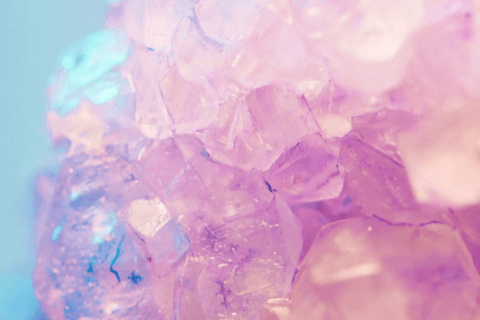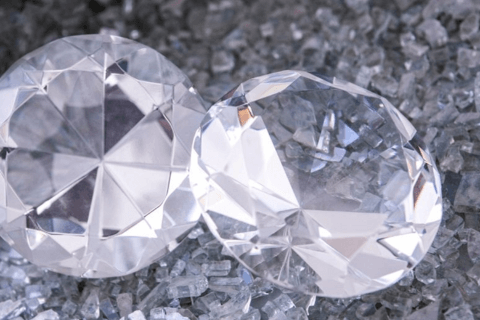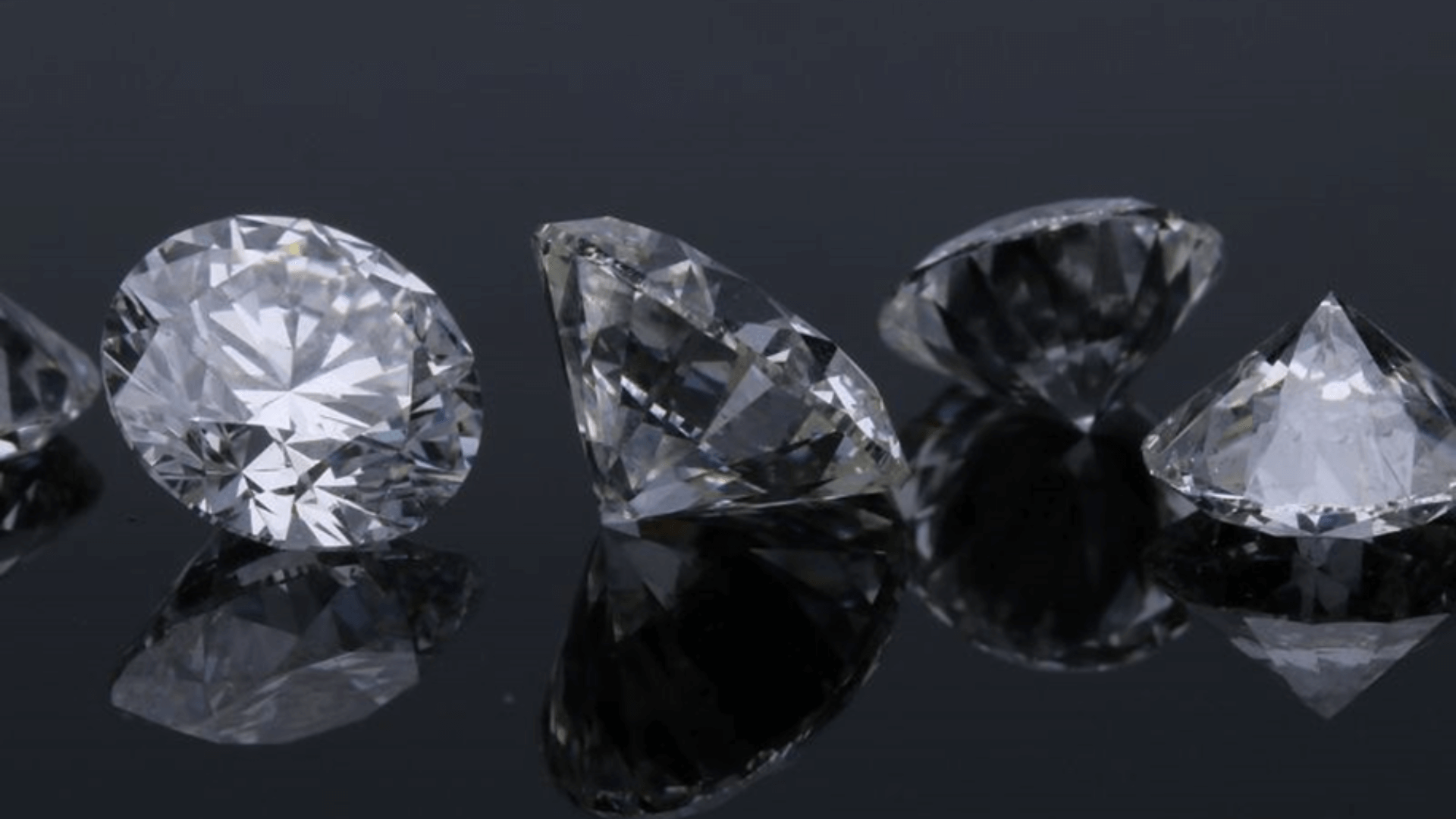Gemologists and professional jewelers cannot distinguish between a lab-created diamond and a natural one through the naked eye. They would need a powerful microscope, specialized equipment, and laser-inscribed markings to look for the minuscule differences that indicate how the diamond was formed.
If you are excited about the prospect of owning a lustrous, real diamond without breaking the bank, lab-grown diamonds are the perfect answer to this.
Despite being grown in labs instead of the earth’s crust, lab diamonds possess phenomenal qualities and have the same optical, chemical, and physical properties as natural diamonds.
As the demand for ethically sourced and eco-friendly diamonds continues to grow, it raises an intriguing question.
The ability to distinguish between a lab-grown diamond and a mined diamond is important for jewelers as it impacts the authenticity, value and confidence of consumers in the diamond market.
In this post, we’ll look at the various methods jewelers use in distinguishing between lab-grown and natural diamonds.
Can jewelers detect lab-grown diamonds through visual inspection alone?
It is impossible for a jeweler to tell the difference between a lab-grown and a natural diamond only through visual inspections. Lab-grown diamonds are as sophisticated as natural diamonds and possess the properties of natural ones.
However, all diamonds have inclusions that can be tested using cutting-edge technologies that are extremely expensive. Since lab-grown diamonds have the same shapes, sizes, colors, and clarity grades, they cannot be distinguished only by the naked eye.
A gemologist can discern whether a diamond is natural or lab-grown using these inclusions. Some inclusions that occur in diamonds, both natural and lab-grown, include:
- Pinpoint inclusions, cloud inclusions, and feathering occur in natural diamonds.
- Metallic inclusions that only occur in lab-grown diamonds.
- Nitrogen in natural diamonds also helps distinguish between diamonds, as nitrogen is never present in lab diamonds.
Lab-grown diamonds also undergo the same formation process as natural diamonds.
But with lab-grown diamonds, the formation process takes a couple of weeks compared to natural ones, which take millions of years to form.
Due to these reasons, lab diamonds look just as authentic as natural diamonds.
If you put one lab diamond and one naturally made stone of the same clarity, carat weight, cut, and color next to each other, even an expert diamond jeweler won’t be able to tell the difference only by looking at it.
Check out our gold and lab-grown diamond collection at Etika Jewels. They have a unique luster, have the same properties as a natural diamond, and reflect all the light that enters the diamond.
You may also like: 7 Reasons Why Lab-Grown Diamonds Are Becoming More Popular.
How do jewelers detect lab-grown diamonds?

Lab diamonds are less expensive and more ethically sourced, making them a highly viable option when shopping for diamonds. But how can jewelers or other professional gemologists distinguish between them?
To confirm whether a diamond is natural or laboratory-grown, jewelers can conduct some tests to test whether the diamond is naturally grown.
The tests include:
Microscopic examination
Visual inspection cannot help reveal the diamond inclusions that can help jewelers detect the difference between a natural diamond and a laboratory-grown one. A microscopic examination can help achieve that.
Since natural diamonds have unique inclusions, they can be used to distinguish them from lab-created diamonds as they do not have inclusions.
Another way that microscopes can help with is nitrogen detection. Lab diamonds do not have nitrogen as they are grown in labs, but natural ones can. Thus, microscopes can help reveal the difference using these factors.
Diamonds also have a microscopic inscription on their girdle (the top part of the diamond that creates the outline). The laser inscription can help determine whether it is a lab-grown diamond using a 30x jeweler’s loupe.
Diamond grading
Diamonds are graded using the 4Cs – cut, clarity, color, and carat weight. These criteria help evaluate the quality and value of a diamond.
Professionals can determine the grading using standardized grading criteria to determine whether the diamond is natural.
Although this test is also not 100% reliable, it can help to address some points that further testing can confirm on the diamond’s origin.
Advanced testing under UV rays
This is one of the most reliable ways to determine whether a diamond is natural or lab-grown. It tests how the diamond reacts to UV rays.
By using the fluorescence of the gemstone, a lab can determine whether it is a natural, lab-created, or a fake diamond. This method is very costly, so jewelers mostly send the stone to labs for testing.
Infrared spectrometer
Lab-grown diamonds are type IIa, while natural ones are type Ia. This is a very sophisticated test that only trained experts can conduct. However, it helps differentiate between these diamond types through thermal radiation.
Thermal radiation is invisible to the naked eye but triggers molecule-based vibrations when interacting with the diamond.
The IR spectrum is then plotted, providing valuable information for the classification of a diamond.
Can lab-created diamonds pass a diamond tester?

If you have a diamond engagement ring or any diamond you’d want to test, the most common method is to use a diamond tester. A diamond tester measures how well the gemstone conducts heat and electricity. It helps to distinguish a real diamond from a fake one, but not a lab-grown one.
Lab diamonds have the same chemical and physical properties as natural ones, so they behave the same in terms of thermal conductivity.
Both diamonds demonstrate efficient heat conduction, but they lack the ability to conduct electricity. Lab-grown diamonds pass this test as they behave the same way as natural diamonds.
Moreover, a diamond can be mistaken for Moissanite, a naturally occurring mineral chemically known as silicon carbide.
This mineral is one of the diamond simulants available but has a different composition than lab and mined diamonds. However, a diamond tester can differentiate between natural and synthetic diamonds.
You may also like: Can Lab Grown Diamonds Have Color?
Can a flashlight test reveal whether a diamond is lab-grown or mined?
A real diamond has a unique luster and shines when exposed to a flashlight. Since lab-grown diamonds have the same luster and physical properties as natural diamonds, a flashlight test cannot reveal whether it is lab-grown or mined.
Although there may be some differences in how lab-grown diamonds and natural ones depict light, the differences are so negligible that they cannot give a conclusive or consistent answer to help distinguish between them.
This test is only helpful for testing fake diamonds.
Since lab diamonds test positive using the flashlight test, advanced techniques using sophisticated technology must be employed to test if a diamond is natural or lab-grown.
Are there any foolproof methods to identify a lab-grown diamond?
Advanced labs like the GIA (Gemological Institute of America) have specialized equipment to help ensure whether a diamond is natural, lab-grown, or inauthentic. One such device is DiamondView, which can help determine whether the stone is mined or lab-grown.
The device uses photoluminescence (PL) spectroscopy and UV radiation to test diamonds, one of the most advanced techniques to analyze diamonds.
Although expensive, this is a method that some jewelers use to detect the differences between a natural and a lab diamond.
PL spectroscopy is a nondestructive analytical technique through which the diamond is illuminated through a light – usually, a laser – and the resulting luminescence is recorded.
This is a very high-end method to check for a diamond’s naturalness by plotting a graph of emitted light intensity versus wavelength.
A PL analysis helps to translate each diamond’s original story as it is extremely sensitive to the detection of trace concentrations such as:
- Traces of metallic and graphitized inclusions help to depict the diamond’s origin.
- Graining patterns result from irregular crystal growth, which helps to determine the story behind the diamond’s growth conditions.
- Facet-related color zoning means different areas or facets of a diamond may vary in color. PL spectroscopy can help decode the internal structure of such diamonds and reveal the potential treatments they might have experienced.
The test is only generally available in gemological laboratories due to the relatively high costs associated with the equipment, maintenance, and specialized sample requirements.
Moreover, lab-grown diamonds are grown in two main ways described below; both produce diamonds that can be tested using PL spectroscopy.
HPHT-treated diamonds

The HPHT – high pressure, high temperature – was the first method developed in the 1950s for most lab-grown diamonds. The process for the formation of HPHT diamonds is as follows:
- Placing a capsule containing a carbon material (such as graphite), a small diamond seed, and a metal flux.
- Heating the capsule to temperatures ranging from 1,300 degrees to 1,600 degrees Celsius.
- Applying an extreme pressure of up to 59,200 atm to the heated capsule.
- Allowing the carbon source to dissolve into the metal flux.
- Crystallization occurs around the diamond seed as the carbon source combines with the metal flux.
- Over time, a real lab-grown diamond forms through this process.
The duration of the process varies and can take weeks, depending on factors such as the quality and size of the stone. These diamonds can be tested through PL spectroscopy.
CVD diamonds
Chemical Vapor Deposition diamonds are grown through a different process from HPHT. Let’s see how these diamonds are grown.
- Filling a gas chamber with gases like carbon, oxygen, and hydrogen.
- Introducing a substrate, such as a thin silver diamond seed or graphite, into the chamber.
- Heating the chamber to 800 degrees and 900 degrees Celsius using hot filaments, lasers, or microwaves.
- Periodically halting the CVD process to remove the graphite that crystallizes around the diamond.
- The diamond will grow as carbon atoms from the gas chamber deposit onto the substrate.
- The duration of the process can take up to several weeks.
- Multiple diamonds can be grown simultaneously using this method.
The PL spectroscopy method can help detect lab-grown diamonds and categorize the formation process they may have undergone in the lab.
Takeaway: Decoding the diamond dilemma – how jewelers identify the differences

A certified gemologist or jeweler with years of experience can only distinguish between a lab diamond and a natural one using cutting-edge technology like microscopes or other methods.
Lab diamonds have the same structure, clarity, grade, and color. They are exactly similar to their natural counterparts – making them attractive for those seeking sustainable, ethical, and less expensive diamonds.
At Etika Jewels, we take pride in providing a stunning and luxurious collection of lab-grown diamonds. Take a look at some of our bestselling diamond jewelry and find the perfect diamond for yourself.

